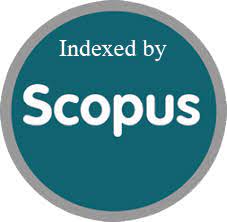Epidemiological And Molecular Study Of Leishmania In Tribal Districts Of Khyber Pakhtunkhwa
DOI:
https://doi.org/10.63682/jns.v14i22S.5452Keywords:
NAAbstract
Abstract
Leishmaniasis is a vector-borne disease that is caused by an obligate intra-macrophage protozoan named Leishmania. It is assessed that more than 12 million individuals are infected worldwide with approximately 7000,000 to 1 million new cases of different clinical structures and 20,000 to 30,000 passing every year. It ranges in severity with varied signs and symptoms ranging from pathologically asymptomatic to lethal severity, causing severe human suffering, death, and great economic loss. Current study was conducted to find out the outbreak of Leishmaniasis and to construct the phylogenetic relationship based upon the sequencing of Leishmaniacytochrome-B gene. Total 100 samples positive for CL were taken from different regions of KPK. They all were confirmed by PCR of cytochrome-B gene. Among 100 patients, 71% male were children and 29% were female children. 89% children were between the age of 1-12 years and 11% were teenagers. 25 samples were selected for Sanger sequencing after the amplification of cytochrome-B gene. The cytochrome-B based sequence analysis showed that two major strains were reported in the tribal districts of Khyber Pakhtunkhwa (23, Leishmania Tropica; 1, leishmania infantum). Six species of the L.tropica were reported closely related with the Tunisia and China L.tropica species, while the leishmania infantum specie was reported closely related with L.donovani and L.infantum stated from china. The SNPs changes were reported in the alignment of the sequences which makes 5 groups of the L.tropica specie. The tribal districts of Khyber Pakhtunkhwa are important in tracking possible ingress of leishmaniasis.
Downloads
Metrics
Downloads
Published
How to Cite
Issue
Section
License

This work is licensed under a Creative Commons Attribution 4.0 International License.
You are free to:
- Share — copy and redistribute the material in any medium or format
- Adapt — remix, transform, and build upon the material for any purpose, even commercially.
Terms:
- Attribution — You must give appropriate credit, provide a link to the license, and indicate if changes were made. You may do so in any reasonable manner, but not in any way that suggests the licensor endorses you or your use.
- No additional restrictions — You may not apply legal terms or technological measures that legally restrict others from doing anything the license permits.










